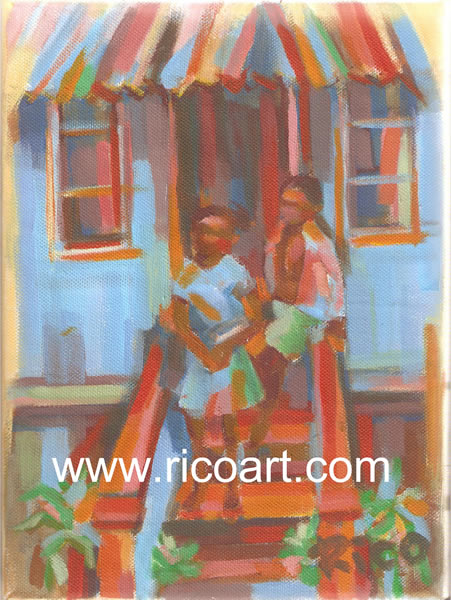Most Jamaicans learn expression learning visual literacy.
Now that the government of Jamaica has finally introduced Visual Arts at the primary level, the language of art can be used to assist students in the development of their literacy skills for life.
Language Arts in primary education can be taught using the language of Art.
Art criticism is critical the Language of Art, also known as Visual Art.
ART CRITIC:
Students learning how to be art critics especially at the primary level can be taught with them role playing as detectives on a mission to find the hidden messages in artworks.
A professional art critic can be either an artist writing about other artists, a newspaper art reporter or a scholar writer.
Journalistic art critics most times write only to the extent where the art is newsworthy. They mostly specialise in reviews. However there are occasions where a trained journalist will also serve the purpose of scholarly writing.
Scholar art critics are equipped with a wealth of knowledge about artists, style, period, provenance and medium and therefore writes for a specific audience. Most times scholar art critics contribute advanced critique for colleges, journals, magazines, galleries.
The FOUR stages of Art Criticism are:
DESCRIPTION:
In describing the artwork, you are simply visually gathering information. So the focus will be on What Exactly Do You See!
Do not analyse, give your opinion, interpret or pass any judgement whatsoever. Stick to the raw facts of what you see exactly.
ANALYSIS:
Here students need to discuss and determine how did the artist construct the artwork. So focus on How did the artist do the artwork. The aim is to bring out how the artist expressed mood, message, ideas etc.
INTERPRETATION:
The art critic simply needs to answer WHY? Why in the world the artist conceive to do this artwork. Why this piece, Why now and For what purpose are the focus questions. Consideration must be given to the emotions evoked and resulting reactions observed or felt.
JUDGEMENT:
Lastly, student art critics will give their own ranking. Points to consider are originality of thought, of work, and how it compares with other works. Also focus on how the artist succeeded in communicating through the language of art. In determining if it is good or bad artwork, of course you must rely on a set criteria and available evidence. So art education on for example history of art, can be helpful.
For more visit the links below.
LINKS
Art Criticism and Formal Anaylsis here
Author Profile
- ... author, qualified & experienced in journalism, creative writing, editing, the arts, art critique, paralegal, photography, teaching, research, event planning, motivational speaking, workshops for children and adults, visual arts etc. Click here for contact form. ...or email me here
Latest entries
 Raw and DirectDecember 14, 2025Goodbye Ruth Lawrence, judge forever
Raw and DirectDecember 14, 2025Goodbye Ruth Lawrence, judge forever Charity and ProjectsNovember 23, 202526 days after Melissa hit Jamaica 28 October 2025
Charity and ProjectsNovember 23, 202526 days after Melissa hit Jamaica 28 October 2025 AdvertorialOctober 1, 2025Daily reads on www.antheamcgibbon.com as @ 1 October 2025
AdvertorialOctober 1, 2025Daily reads on www.antheamcgibbon.com as @ 1 October 2025 Jamaica to rahtidSeptember 7, 2025The Portland, Jamaica dilemma
Jamaica to rahtidSeptember 7, 2025The Portland, Jamaica dilemma











